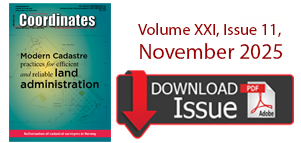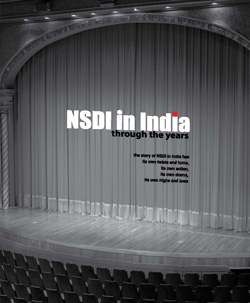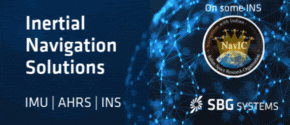Articles in the GNSS Category

Some of this publicity relates to the UK’s developments in the area of detecting GNSS interference, specifically the GAARDIAN program (for GNSS Availability, Accuracy, Reliability anD Integrity Assessment for Timing and Navigation). This was a wide collaboration between government, academia, and industry to develop a robust system for analyzing interference phenomena associated with GPS and eLoran systems and the effects on their use in safetyand mission-critical applications.

WAAS provides very precise navigation service, with both horizontal and vertical guidance over the Continental United States (CONUS) and a large portion of Alaska, Canada, and Mexico. Other countries and regions of the world also have fielded or are fielding similar systems. WAAS and each of these other systems are known as a Satellite Based Augmentation System, or SBAS. As envisioned at its inception, WAAS today provides service from enroute through approach.

Consciously or not, all humans are navigators, so it is without wonder that satellite navigation has swiftly become a backbone of modern civilisation. All of the sudden, situation awareness and management become significantly improved by introduction of the helpful and inexpensive technology that provides positioning services of unprecedented quality.

GNSS 2D positioning accuracy is well defined. According to the receiver model, the software, the positioning Mode, the available corrections used, the 2D positioning accuracy vary from few meters to mm. However the altimetry positioning with GNSS is less accurate than 2D one. Without an accurate Geoid reference earth surface, the levelling survey by GNSS couldn’t be done with sufficient accuracy needed for several fields of survey like construction or water management projects.

Despite the good performance of GPS, there are more than a few GNSS vulnerabilities and threats. Categorisation into unintentional and intentional is sometimes done to aid understanding. Unintentional disruptions include natural phenomena such as high levels of ionospheric disturbance and solar flares, as well as man-made phenomena including system errors (satellite or signal), and unwanted radio frequency transmissions (TV, microwave communications, radar, …).

The discussions in the United States among LightSquared, the Federal Communications Commission (FCC), the Global Positioning System (GPS) industry, Department of Defence (DoD), Department of Transportation (DoT) and users about the division of spectrum in the L-band should not be seen as just an internal US affair. The strength of both the camps, Telecom providers and the GPS industry indicate that this battle may easily expand to other parts of the world. For many, this battle was a surprise, particularly for a peaceful world like navigation, where discussions are more gentlemen like and either focused on which GNSS systems is the best, or on the backup of GNSS which is so vulnerable and where society cannot function anymore without GNSS. All this changed abruptly when LightSquared published plans to install 40,000 transmitters in a band adjacent to L1 band used by GPS. This led to numerous protests in the GPS industry and among its users as what has been published in many magazines. It is for us to see whether it is telecom versus GPS, or is there a sensible cooperation in reach?

The bottom line is that the LightSquared signals interfere with GPS, and LightSquared should not be allowed to proceed until the interference problems are resolved. To understand this perspective, some background is useful. The spectrum allocated to GPS for its L1 signal is from 1559 MHz to 1591 MHZ. This spectrum is shared by other Global Navigation Satellite Systems such as the EU’s Galileo, China’s Compass, and shortly also by Russia’s GLONASS, which uses the 1598 MHz to 1605 MHz band for its present signals. Basically, GNSS signals occupy the 1559 MHz – 1605 MHz band.

LightSquared is a gem! I am not only talking about its nationwide high-speed 4G capabilities and that it will be a boost to our lagging IT industry which has fallen behind 18 other nations. I am focusing on how it can beautifully complement high precision applications of GPS. It is a gem for GPS high precision users and for RTK.
What is LightSquared?
LightSquared Subsidiary LLC is a company that plans to provide a wholesale, nationwide 4G-LTE wireless broadband network integrated with satellite coverage. LightSquared will combine existing mobile satellite communications services (formerly known as SkyTerra) with a ground-based wireless communications network that uses the same L-band radio spectrum as the satellites.

A S (quasi-zenith satellite), which was anticipated to be the original Japanese positioning satellite, was launched in September, 2010. As an augmentation system of GNSS, two MTSATs had already been put into orbit and their main purpose is to broadcast the correction data for wide-area DGPS. This has actually improved the accuracy of wide area DGPS as a result of reception of the correction data from MSAS (MTSAT Satellite-based Augmentation System). The QZS also enhances the ranging function and it already has signal characteristics for the GNSS that are expected in the near future.










 (5.00 out of 5)
(5.00 out of 5)